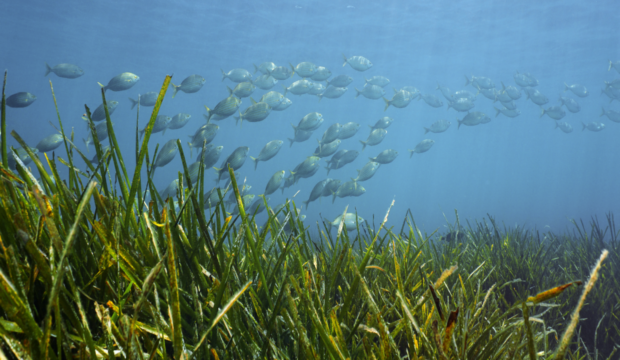Join the FlatEMF study to discover the impact of subsea electricity cables on marine wildlife

To transport electricity generated offshore to consumers on land, subsea cables are needed. These cables generate electromagnetic fields (EMFs). Anecdotal evidence suggests that EMFs can influence the behaviour of commercial flatfish, which caused the fishing community to express their concerns. However, the evidence for these concerns is thin and more research is needed. To address this knowledge gap and facilitate fact-based discussions between all users of the sea, we decided to combine forces and conduct a study on the impacts that EMFs might have on commercially important flatfish species.
An electromagnetic field (EMF) is a combination of electric and magnetic fields of force, which can be produced either naturally or from human activities. While humans are not able to detect electromagnetic fields, a lot of animal species have this ability – ranging from bacteria to whales. The topic of EMF and its effect on marine animals has been of scientific interest for almost 20 years. Nowadays the relevance of EMF has re-emerged due to the massive, planned deployment of offshore renewables.
The relationship between subsea electricity cables and marine wildlife
The topics of offshore energy, EMF, and the marine environment are mutually connected because all cables carrying electricity create electromagnetic fields. These cables are needed to bring electricity from offshore wind farms and grid infrastructure to land. Even though power cables are usually buried in the seabed or protected with concrete, there are still cables that cannot be buried or isolated completely due to local seabed conditions. Floating wind farms, for example, require cables that are suspended in water. While EMFs are naturally occurring in the environment, EMFs produced by electric power cables can interact with other naturally occurring fields and can disguise or distort natural EMF cues that animals use for important life functions.
Why do we need this study and what are its goals?
To address the urgency of this topic and help facilitate fact-based discussions between all users of the sea, 50Hertz, Europacable, EirGrid, Renewables Grid Initiative, and TenneT decided to combine forces and conduct a study on the impacts EMF might have on commercially important flatfish species. The research is especially driven by the need to bring scientific evidence into the discussions related to the expansion of offshore electricity cables and the claim by the fishing industry that a moratorium on underwater cables should be put in place due to environmental damages.
This work will aid in understanding of how flatfish may interact with offshore cables on a behavioural level. It will provide insights into feeding behaviour, implications on migrations, and determine if these species are likely to cross subsea power cables in search of food, mates, or shelter.
In order to address as many relevant topics as possible, from different life stages to other fish species and geographical areas, project partners would like to invite other interested parties to join this research and contribute to our knowledge on how to use our seas in a responsible and sustainable way.
How to join our study
Contact Ana Rusan (ana@renewables-grid.eu) at RGI for more information on how to get involved.
Tags:
Share article:
Contact
Should you have any questions, please get in touch with:


